
Nighthawk AC series Archives

Nighthawk AC series Archives
Netgear R7000 Router Review
Editor's Note: As of Dec. 19, 2016, Netgear has issued security updates to patch a serious vulnerability in its routers, including the Nighthawk AC 1900. We recommend not using the Nighthawk AC 1900 until the update is applied, so click here to find out how to install the patch.
Netgear's Nighthawk AC 1900 Smart WiFi Router, better known as the R7000, is for those who need to save a few bucks while creating an up-to-date wireless network. At $190, it's priced about $100 less than the competition (including Netgear's own R8000) and delivers strong throughput, but can't match the range of other 802.11ac routers.
Design
At 11.2 x 7.3 x 2.0 inches, the black, angled Netgear R7000 looks like a smaller version of the company's R8000. Three finlike antennas attached to the back use beam-forming technology to optimize the signal. They can be aimed to grab the strongest signal or unscrewed and replaced with third-party options.
The R7000 can be wall-mounted or can sit on a shelf. Unfortunately, its in-wall AC adapter, at 3.5 x 2.8 x 1.1-inches, is awkwardly large and more than twice the size of the Trendnet TEW-812DRU's power plug.
Along its front edge, the R7000 has a dozen status LEDs. Lights indicate when it is turned on, is connected to the Web and has activity on its two bands. In addition, there are lights showing whether its Ethernet ports are active, the Wi-Fi Protected Setup (WPS) and whether Wi-Fi transmissions are turned on.
Unlike the more expensive Netgear R8000, there's no physical switch in the back to turn the lights off, but you can do so from the system's software. However, the R7000 does have switches for power, activating WPS and disabling its Wi-Fi transmissions. There's also a recessed reset button for wiping the firmware settings and starting over.
The back of the R7000 has 4-gigabit Ethernet ports, but lacks the teamed higher-speed ports that the ASUS RT-AC87U has. There's a USB 2.0 port in the back, as well as a USB 3.0 connection in the front for hard drives, memory keys and printers. But the R7000 does without the Linksys WRT 1900AC's eSATA port for directly plugging in a hard drive.
Rather than a tri-band design, the R7000 uses a 3x3 dual-band approach with 2.4- and 5-GHz transmitters. It adds up to a theoretical bandwidth of 1.9 Gbps. Recently, Netgear added the 4x4-based R7500 model, which hits a peak at 2.3 Gbps, but costs $100 more.
Setup
The Netgear R7000 comes ready to roll with a network cable, AC adapter and startup booklet. There's no CD with the manual or software, so you'll need to download them yourself.
All told, it took about five minutes to create a Wi-Fi network around the R7000. After plugging the router in and typing in its IP address (192.168.1.1) or "routerlogin.net," Netgear's intuitive Genie software pops up to set the system up. Alternately, you can manually configure the R7000. At the end of the configuration process, the R7000 provides a summary page of all the settings and passwords.
The R7000 arrived with unique network names and passcodes, which are printed on a label underneath the router; they should still be changed quickly. The router can work with everything from WEP to WPA2 encryption techniques, has Network Address Translation (NAT) and Stateful Packet Inspection (SPI) firewalls, and can protect against a Denial of Service attack.
MORE: Best Streaming Players
Able to run as a router, access point or a wireless bridge to push a Wi-Fi network into an uncovered part of the home, the R7000 is versatile. It can work with PC-based or Time-Machine-based Mac backups, set up an FTP site for remote access and operate as a DLNA and iTunes media server.
I was able to connect a variety of Android, iOS and PC clients to the R7000 manually or using its WPS system. On the downside, the system can use neither a Radius nor a LDAP server for authenticating potential clients. However, the system can set up a protective guest network that allows Internet access but can block use of the network's drives.
Genie Software
As is the case with the R8000, the R7000's Genie software has apps for PCs, Macs, iOS and Android devices. On the other hand, you can tap into the system's settings by pointing a Web browser window at the router's home address.
Genie's main screen provides a nice overview, showing how many clients are connected, which bands are active, the guest network's status, whether the parental controls are in use and the connected USB devices.
The details are arranged in categories on the left side, and the software prominently shows the router's firmware version.
As is also the case with the R8000, Genie displays passwords as scrolling type. In other words, don't show it to strangers, or friends for that matter.
The R7000 can list and map its clients, and includes a nice Traffic Meter for monitoring what's coming and going. There's an easy-to-setup Quality of Service system, which prioritizes selected data packets or clients to get special treatment.
The R7000 is a step behind more-premium 802.11ac routers when it comes to extras. It lacks online storage, a virus scanner and the ability to use a 3G/4G USB dongle for emergency Internet access, putting it a step or two behind the $264 ASUS RT-AC87U. Happily, it can tap into DD-WRT open-source firmware written for the R7000, which can be used to tweak the router's performance or add features.
Performance
Powered by a 1GHz processor with 256MB of RAM and 128MB of storage space, the R7000 can work with three independent lanes of data flow. The dual-band router tops out at a theoretical 1.9 Gbps of bandwidth.
Based on tests with ixChariot software and unobstructed transmissions, the R7000 was able to move up to 444.8 Mbps of combined bandwidth at 5 feet. That's about 35 percent off what a tri-band router can do and slightly behind the 446 Mbps achieved by the dual-band Trendnet TEW-812DRU, which sells for about $120.
It's worth noting that while the R7000 hit its peak at about 5 feet from its clients, the 812DRU did so at closer to 15 feet.
In 5-GHz mode, the R7000's ability to move 353.8 Mbps of data at 5 feet was well above the average throughput of 315.2 Mbps and ahead of the $300 R8000's showing of 302.3 Mbps. The R700 was second best compared to the ASUS RT-AC68U's mark of 361.3 Mbps.
In the Tom's Guide test lab, the R7000 maintained a throughput of 252.4 Mbps from 140 feet, good enough to best the average (211 Mbps) and the TrendNet (209.5 Mbps), but still short of the ASUS AC68U (291.7 Mbps). However, in an older house with lots of walls, the R7000 lost contact with clients at 140 feet. That's 25 feet short of the class-leading R8000, but 5 feet longer than the DGL-5500. It's probably more than enough for an apartment or small house, but it won't fill your McMansion with data.
MORE: 10 Best Photo Storage and Sharing Websites
The router's 91 Mbps of 2.4-GHz bandwidth was good enough for a middle-of-the-pack result, trailing the TrendNet TEW-812DRU (92.3 Mbps), but well ahead of the RT-AC68U (74.9 Mbps).
I used the R7000 extensively for more than a week of heavy-duty data work, and it never balked when I performed our saturation test with four clients. I used the router to dole out a movie to an Android tablet, while serving up a TV show to a Windows slate and listening to an Internet radio program on an iPad — all while moving data back and forth with a desktop PC. Throughout, the Netgear was rock solid.
Warranty
Unlike the industry-leading Trendnet's three years of coverage and ASUS's two-year warranty, the R7000 comes with a scant 1 year of coverage.
Bottom Line
If you need a high-performance 802.11ac router for a fairly affordable price, look no further than Netgear's $190 R7000. While it lacks the reach for filling a larger home with data, it delivers solid speeds along with easy-to-use software. For around the same price, the ASUS RT-AC68U delivers even better throughput, but those who pick up the R7000 won't be disappointed.
Specs
Size: 2.0 x 11.2 x 7.3-inches
Number of Antennas/Removable: 3/Yes
Wi-Fi Spec: AC 1.9 dual-band 802.11ac
Ports: 4 gigabit Ethernet, USB 2.0 (back), USB 3.0 (front)
Peak 802.11ac performance: 444.8Mbps
Range in 2.4GHz mode: 140 feet
Follow Tom's Guide at @tomsguide and on Facebook.
Tag: 802.11AC
ASUS announces Lyra Trio 802.11AC AC1750 Dual Band Mesh Wi-Fi System
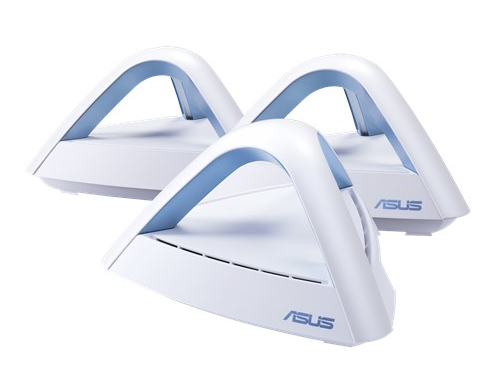
It is great to see home Wi-Fi companies focused on mesh systems. Repeaters work, but they add a level of complexity and wonkiness that most people don’t want to deal with. The new ASUS Lyra Trio’s 3×3 MIMO pyramid antenna system claims coverage for homes up to 5400 square feet and an easy setup. And as a bonus, as it […]
Read moreASUS Launches Blue Cave 802.11AC AC2600 Wi-Fi router

Beyond the doesn’t look like a Wi-Fi router visage, the most interesting thing about the ASUS Blue Cave 802.11AC AC2600 Wi-Fi router is that it’s the first Intel Home Wi-Fi Chipset (what a product name :)) based networking kit that I’ve run across. Given the 4×4 1733Mbps + 800Mbps specifications, it has to be using the WAV524. SoC considerations aside, […]
Read moreASUS Announces DSL-AC88U
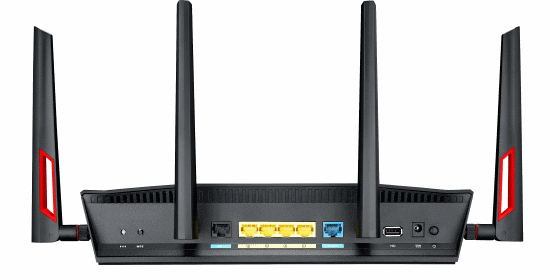
If you have DSL at home the new ASUS DSL-AC88U provides an integrated approach to providing internet connectivity from a single device. What makes this guy particularly interesting is that it also has a WAN port, so if you decide to drop the DSL when cable comes to down you won’t have to eBay it. Also, while it’s not mentioned […]
Read moreASUS Announces BRT-AC828 802.11AC AC2600 4×4 Wi-Fi router
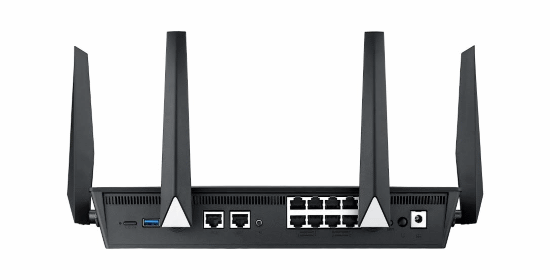
I wasn’t able to run down price or exact availabilty, but this is still quite an interesting looking device, even though it’s not the latest wireless technology. As we can see from the photo above, the business oriented BRT-AC828 sports two WAN and eight LAN Gigabit Ethernet ports. Providing fail-over and enought connectivity that those of us who need a […]
Read moreD-Link DIR-885L/R AC3150 Ultra Wi-Fi Router
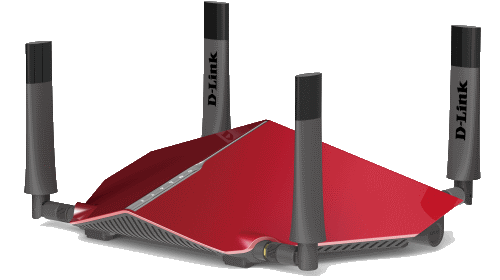
I like the recent trend to make higher-end Wi-Fi routers look interesting. Stepping away from the old-school canister or plain shell with antenna is especially pleasing. No one has embraced this more fully than D-Link, with the DIR-855L/R being one of the latest crop of performance routers. Sporting a dual-core 1.4GHz Broadcom BCM4709C0 SoC, this 4×4 stream AC3150 (1000Mbps […]
Read moreNETGEAR announces NIGHTHAWK X10 R9000 802.11ac/ad Wi-Fi router with Plex
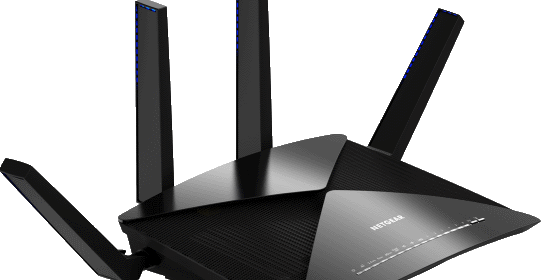
If you have $500 burning a hole in your pocket, and a desperate need to be the first one on your block to have an 802.11ad Wi-Fi router with 10Gbe fiber support (?) – the newly announced NETGEAR NIGHTHAWK X10 is just the thing for you. That’s not to say, it doesn’t have some useful features though; like powererd TX/RX […]
Read moreASUS announces RT-AC58U 802.11AC 2×2 Wi-Fi router
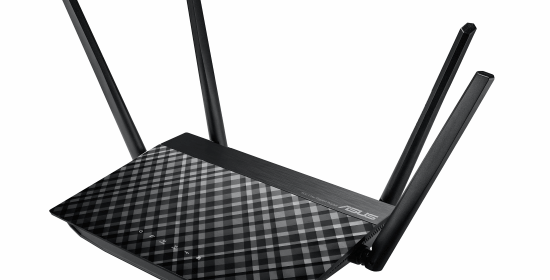
Not everyone wants, needs, or is willing to pay for the top-of-the-line tri/quad stream 802.11AC Wi-Fi router. For those who fall into that category, but still want modern features like MU-MIMO the ASUS RT-AC58U might be just the thing. It is launching at the end of September, but price hasn’t been disclosed yet so we’ll have to wait and see […]
Read moreNETGEAR Nighthawk X8 – AC5300 Tri-Band Quad-Stream Wi-Fi Router (R8500)
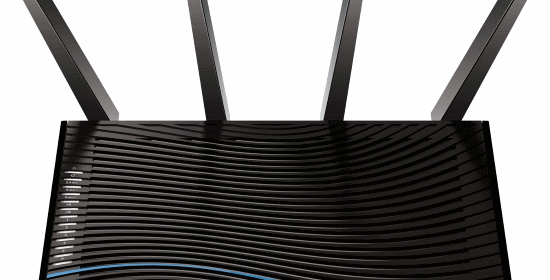
NETGEAR touts the Nighthawk X8 AC5300 (R8500) Smart Wi-Fi router as “the next wave in Wi-Fi”. Generally, I am inclined to dismiss this sort of hyperbole, but the $350/£350 802.11AC includes features that are a reasonable step up from other models including: quad-streams, two 802.11AC radios, Wave 2 enhancements , and six Gigabit Ethernet ports, with two 802.3ad (link […]
Read moreD-Link EXO AC1900 Wi-Fi router now shipping
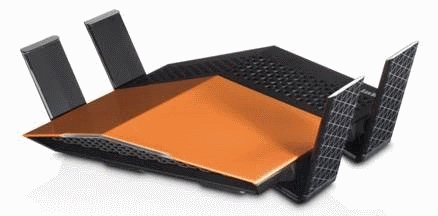
Not everyone wants, or needs, a monster Wi-Fi router that costs $200-300 so it’s great to see that D-Link is bringing out devices like the EXO, that with AC1900 speeds should be plenty in many scenerios and still ahve that angry insect look (that I like) going on. First Router in EXO Series Offers Extreme Home Coverage at an […]
Read moreNETGEAR Nighthawk X4S R7800 AC2600 Wireless Router
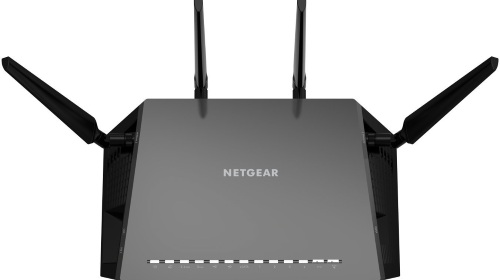
The quad stream NETGEAR AC2600 Nighthawk X4S R7800 802.11AC wireless router is the successor to last year’s AC2350 Nighthawk X4 R7500 (and R7500v2). Besides a bump in “S”, for Smart, the Nighthawk X4S also jumps to the dual-core 1.7GHz Qualcomm IPQ8065, adds 200MHz of theoretical bandwidth to the 2.4GHz radio (800Mbps + 1733Mbps = AC2600) by increasing to 4×4 in […]
Read moreAffiliates
Login
Register For This Site
A password will be e-mailed to you.
Site
Recent Comments
| S | M | T | W | T | F | S |
|---|---|---|---|---|---|---|
| 1 | 2 | 3 | 4 | 5 | ||
| 6 | 7 | 8 | 9 | 10 | 11 | 12 |
| 13 | 14 | 15 | 16 | 17 | 18 | 19 |
| 20 | 21 | 22 | 23 | 24 | 25 | 26 |
| 27 | 28 | 29 | 30 | |||
Tag: wireless range extender
With this post, we will try to make you understand the working of range extender and how they can be best employed. We are going to consider Netgear Nighthawk EAX80 mesh range extender in this post. Nighthawk series is considered as expensive and most-featured series of Netgear networking products. With AX8, 8 here refers to the capacity of the range extender to transmit the same signal to 8 devices at a time. Being a new Wi-Fi standard, it is currently being supported by limited Wi-Fi devices like Intel cards and Samsung S10 series phones. The range extenders mainly boost the existing network reaching your home from the internet service provider’s end. If you are receiving a signal up to 5 meters inside your home and want to reach it up to 10 meters, then you can go with a range extender that acts as an amplifier for the network.
Range extenders explained
In this modern world, most of our day to day work depends on the connectivity to the network. All the consumer durable we use either in office or at home requires a stable internet connection for optimal functioning, And this is possible only if there is equal signal strength distributed on all the devices at the same time. This is where the Wi-Fi extender comes into place, as it can handle multiple Wi-Fi devices simultaneously. If you employ EAX80, it can boost the signal of every standard router, no matters which brand the router is from. Let us explain the whole of working simply. If you are a senior citizen, then the speed requirements will be comparatively lesser than that of the photographer. The signal enters the home through the modem provided by the internet service provider. A basic router can transfer data at a rate of 100mbps.
How to use the wireless range extender like EAX80 in the best way?
Now, you must have understood what the range extender is, we would now suggest to you how you can use the range extender more efficiently. The simplest method to improve the signal strength of your Wi-Fi is by restarting the Wi-Fi router and plug-in back after some time and try connecting the Mesh Wi-Fi system instead of the normal extender.
Our technical experts have already tested and verified the performance of the AX8 nighthawk wireless router and find that it is offering the high signal strength in all the directions irrespective of a particular zone or area. You can use Wi-Fi 6 speed instead of using a slower 5/AC mesh system.
The Netgear Nighthawk AX8 or 6 is 6 & 8-stream mesh extender by Netgear will meet your expectations and you can easily come out of the situation where you are not being able to connect to the internet from different Wi-Fi devices. When you connect the Nighthawk WiFi 6 mesh extender to the power supply and the network port, it will start connecting to the existing network on its own. You don’t need to search for the router’s SSID manually. Once connected, you can get the same speed of network on all the floors of your house.
What’s New in the Nighthawk AC series Archives?
Screen Shot
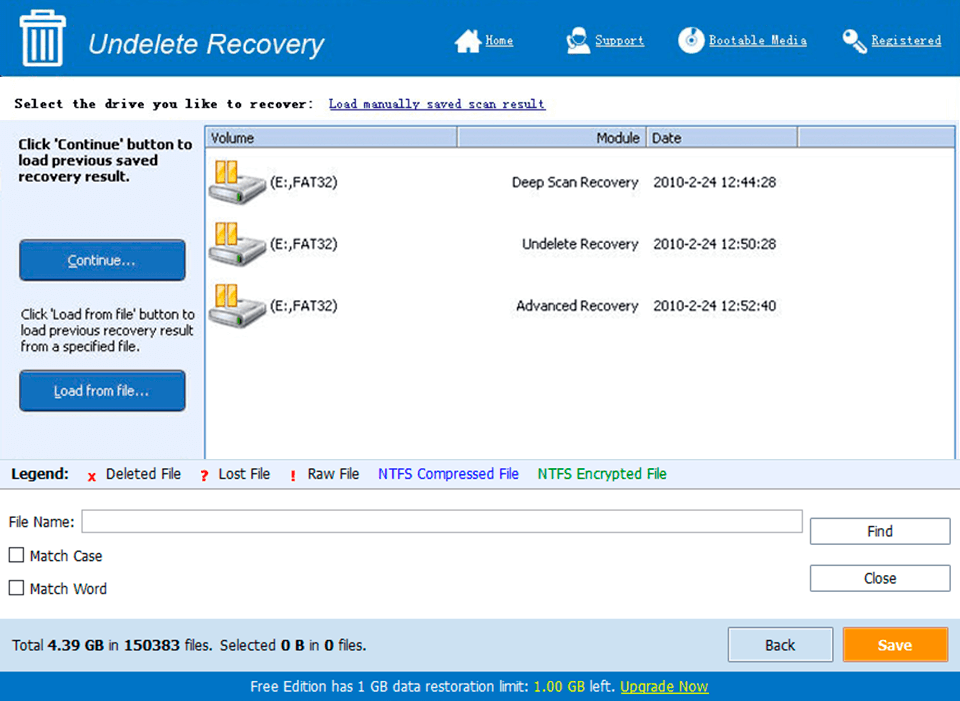
System Requirements for Nighthawk AC series Archives
- First, download the Nighthawk AC series Archives
-
You can download its setup from given links:


